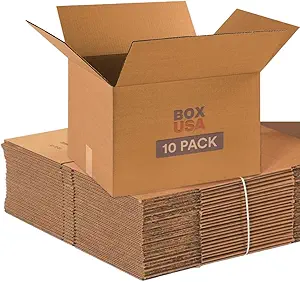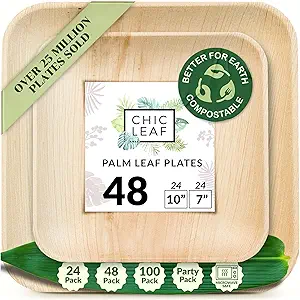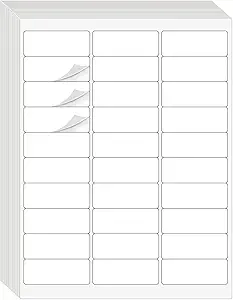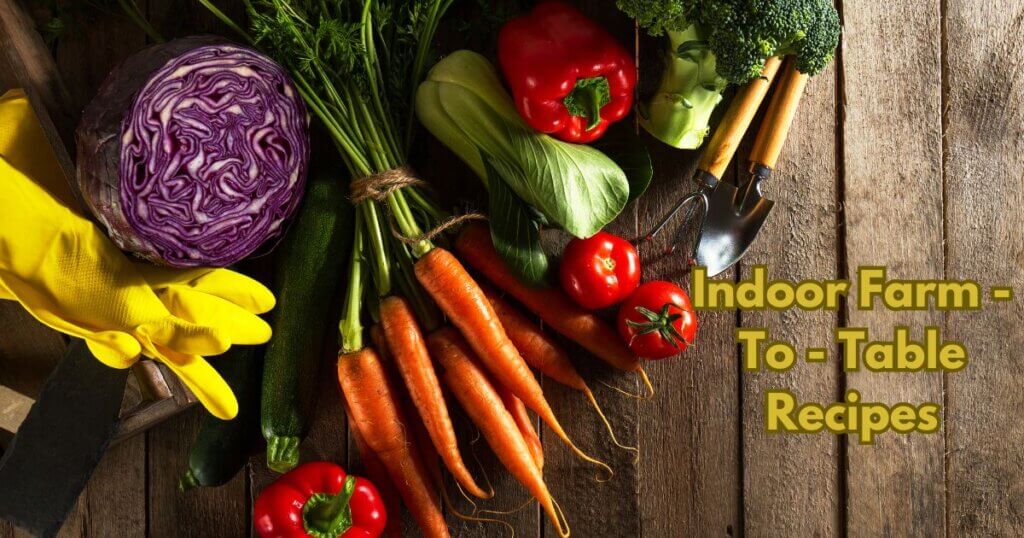7 Powerful Benefits of Eco-Friendly Packaging for Crops
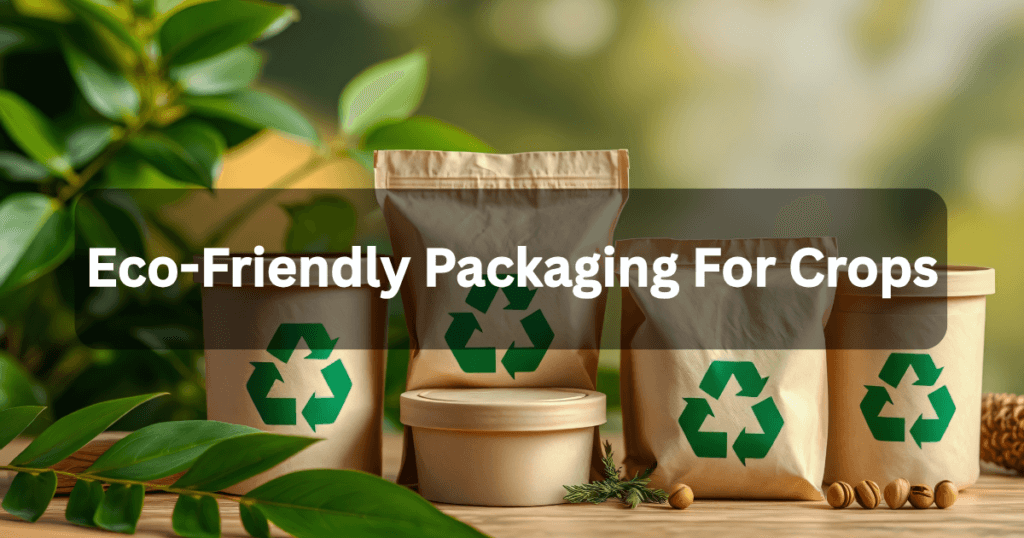
Some of the links in this post are affiliate links. As an Amazon Associate, we earn a referral fee from qualifying purchases—at no extra cost to you.
In today’s fast-changing agricultural world, sustainable choices matter more than ever. One major leap forward? Eco-friendly packaging for crops. Whether you’re a small-scale urban farmer or a large commercial grower, switching to sustainable crop packaging not only helps the planet but also boosts your bottom line and brand reputation.
Let’s dive deep into why eco-friendly packaging is revolutionizing the way we store, ship, and sell crops—and how you can ride this green wave to success.
Table of Contents
Why Eco-Friendly Packaging for Crops is a Game Changer
Eco-friendly packaging isn’t just a trendy term—it reflects a significant shift toward more sustainable agricultural practices. For decades, agriculture has relied heavily on plastics and synthetic materials that take centuries to degrade, creating long-term pollution problems. These packaging materials often end up in landfills or natural environments, damaging soil, water, and wildlife in the process. With the rise of biodegradable, recyclable, and compostable options, the agricultural sector now has a powerful tool to reduce waste and improve environmental stewardship.
What Is Eco-Friendly Packaging for Crops?
Eco-friendly crop packaging refers to any form of containment—bags, wraps, boxes, or trays—made from materials that are either biodegradable, compostable, recyclable, or sustainably sourced. These packaging solutions are specifically designed to break down safely in the environment or be reused within a closed-loop system. They pose significantly less risk to ecosystems compared to conventional plastics. Farmers who choose sustainable packaging not only help the planet but also appeal to environmentally conscious consumers and regulators.
The Environmental Impact of Traditional Crop Packaging
Plastic Pollution and Agricultural Waste
Plastic continues to dominate crop packaging globally, contributing millions of tons of waste each year. This waste often escapes proper disposal and ends up in rivers, oceans, and farmland, where it can take hundreds of years to decompose. Along the way, it disrupts ecosystems, harms wildlife, and degrades soil health—potentially affecting future crop yields. As this problem grows, the need for more sustainable packaging solutions becomes more urgent than ever.
High Carbon Footprints
The carbon footprint of traditional packaging is larger than most realize. From the extraction of fossil fuels to the manufacturing and transportation processes, each stage emits greenhouse gases that worsen climate change. Even disposal methods like incineration or landfilling contribute to carbon emissions and environmental degradation. Reducing reliance on these materials is a key step toward lowering agriculture’s overall environmental impact.
Top Benefits of Using Eco-Friendly Crop Packaging
Reduces Environmental Footprint
Eco-friendly packaging materials, such as mushroom trays or recycled cardboard, break down without leaving behind microplastics or toxins. This dramatically reduces the long-term environmental impact of packaging waste. By switching to these materials, farmers can decrease pollution and promote healthier ecosystems. It’s a practical way to align crop production with sustainability goals.
Boosts Brand Image
Today’s consumers are more aware and more selective about the environmental impact of their purchases. When they see fresh produce packaged in sustainable materials, it builds trust and reflects positively on your brand. Eco-packaging communicates that your business values responsibility, transparency, and care for the planet. This can lead to stronger customer loyalty and increased market competitiveness.
Enhances Shelf Life Naturally
Certain eco-friendly materials have properties that help maintain freshness by absorbing moisture or resisting microbial growth. This means produce stays fresher for longer, reducing the risk of spoilage during transport or retail display. The result is less food waste, higher product quality, and fewer returns or losses. Natural packaging methods can offer both ecological and financial benefits.
Improves Consumer Health
Traditional plastic packaging can leach harmful chemicals or microplastics into food, especially under heat or stress. Eco-friendly packaging, made from plant fibers, starches, or other natural materials, avoids these risks entirely. Consumers can feel confident knowing their produce is packaged without toxic additives. This added layer of safety is especially appealing to health-conscious buyers.
Saves Long-Term Costs
Although eco-packaging can come with a slightly higher upfront cost, it often leads to cost savings over time. Reduced disposal fees, eligibility for government incentives, and improved brand loyalty can all offset initial expenses. Additionally, fewer returns due to spoilage and increased consumer trust can boost revenue. When viewed from a long-term perspective, sustainable packaging is a smart financial move.
Meets Regulatory Standards
Many countries are implementing strict bans and regulations against single-use plastics in agriculture and food systems. Businesses that fail to adapt risk facing fines, legal issues, or losing access to certain markets. Switching to eco-friendly packaging ensures compliance with existing and upcoming regulations. It also positions your business as a proactive and responsible player in the industry.
Supports a Circular Economy
Eco-friendly packaging often supports a closed-loop or circular economy by using materials that can be composted or recycled and returned to the soil or supply chain. For example, trays made from agricultural by-products can be composted into nutrient-rich material. This approach minimizes waste and maximizes resource use, aligning well with regenerative agricultural practices. It turns packaging from a liability into a resource.
Popular Materials Used in Eco-Friendly Crop Packaging
Compostable Bags
Compostable bags made from corn starch, PLA, or potato peels offer a lightweight, biodegradable option for packaging fruits and vegetables. These bags break down quickly in commercial composting facilities and don’t leave behind harmful residues. They are ideal for farmers markets, CSA boxes, or small-scale retail operations. Simple to switch to, compostable bags are an accessible starting point for sustainability.
One of the easiest ways to go green is by using certified compostable produce bags like the UNNI 100% Compostable Bags. Made from renewable materials and fully biodegradable, they’re perfect for packaging small quantities of fruits or vegetables in a farmers market or CSA setting.
Recycled Cardboard Crates
Recycled cardboard crates are durable, cost-effective, and fully recyclable. They are widely used for transporting large quantities of produce and can be stacked efficiently, reducing transport emissions. Made from post-consumer paper waste, they help divert materials from landfills and support the recycling industry. These crates are a favorite among both small farms and large distributors for their strength and sustainability.
For bulk produce deliveries, EcoBox Recycled Cardboard Shipping Boxes offer a reliable and sustainable solution. They’re made from 100% post-consumer material and are fully recyclable—making them ideal for eco-conscious farmers and distributors.
Bamboo and Palm Leaf Trays
Bamboo and palm leaves are fast-growing, renewable resources that make excellent packaging materials. Trays made from these plants are strong, moisture-resistant, and naturally biodegradable. Their aesthetic appeal also adds value, especially in upscale or organic retail environments. These materials are a great example of how sustainability can also enhance product presentation.
Add a touch of natural elegance to your produce display with Naturally Chic Palm Leaf Trays. These fully compostable trays are sturdy, water-resistant, and perfect for showcasing greens, herbs, or even fruit at high-end farmers markets or organic grocers.
Edible Packaging
Edible packaging is an innovative concept where the packaging itself can be safely consumed or dissolves harmlessly in water. Common materials include seaweed, rice paper, or milk protein films that wrap produce while keeping it fresh. These zero-waste solutions are gaining traction among cutting-edge food companies and conscious consumers. Edible packaging represents a bold step toward eliminating packaging waste entirely.
Real-Life Examples: Farmers Going Green with Packaging
Urban Farms Using Mushroom Packaging
Vertical and urban farms are increasingly adopting mushroom-based packaging made from mycelium, the root structure of fungi. This material is grown into specific shapes and offers durability similar to styrofoam but decomposes fully within weeks. It’s lightweight, protective, and ideal for shipping delicate greens or herbs. Mycelium packaging is scalable and pairs well with the sustainable ethos of city-based agriculture.
Organic Growers Switching to Banana Leaves
In regions like Southeast Asia and East Africa, farmers are turning to banana leaves as a traditional yet effective form of packaging. These leaves are naturally waterproof, flexible, and fully compostable. They’re used to wrap leafy greens, herbs, and even grains, providing a zero-waste option. Reviving this practice blends cultural heritage with modern sustainability goals.
Challenges in Adopting Eco-Friendly Packaging for Crops
Initial Costs and Sourcing
One of the main obstacles to adopting eco-packaging is the higher upfront cost compared to conventional plastic. Smaller farms, in particular, may find it difficult to absorb the expense without financial support. Additionally, sourcing certified, high-quality eco-materials can be challenging depending on your location. Building relationships with trusted suppliers and planning ahead are essential for a smooth transition.
Storage and Durability Concerns
Eco-friendly materials often require more careful storage conditions than synthetic alternatives. Some materials are sensitive to humidity, temperature, or rough handling, which can reduce their shelf life. Ensuring dry, cool storage and proper handling procedures is crucial to prevent spoilage or breakdown. This added complexity must be factored into operational planning.
Supply Chain Adaptations
Switching to eco-packaging can affect how crops are harvested, stored, transported, and displayed. New materials may require different packing methods or equipment, and your logistics team may need additional training. Packaging shapes or weights might impact stacking or freight costs. These changes require coordination across the entire supply chain to avoid disruptions.
How to Transition to Sustainable Crop Packaging
Start Small
Rather than replacing your entire packaging system overnight, it’s best to begin with one product or crop. Trial compostable bags, trays, or crates on a smaller scale to evaluate performance and gather feedback. This helps identify potential challenges without overwhelming your operations. A gradual rollout builds confidence and allows for smart scaling.
Partner with Green Suppliers
Working with environmentally certified suppliers ensures you’re getting materials that meet recognized standards for sustainability. Look for third-party certifications such as FSC, OK Compost, or BPI. These partners can also offer technical support, product testing, and marketing insights. Choosing the right suppliers can streamline the switch and ensure consistent quality.
Help your customers recognize your commitment to sustainability with Eco-Friendly Packaging Stickers. These biodegradable labels are great for CSA boxes, market produce, or retail packaging—and they send a clear message that your farm values the planet.
Educate Consumers
Let your customers know about your sustainability efforts by including clear messaging on your packaging or in your marketing. Explain how eco-packaging benefits the environment and improves food safety. Share your story on social media or through newsletters to build a deeper connection with your audience. Educated consumers are more likely to become loyal, long-term supporters.
Leverage Incentives
There are numerous grants, subsidies, and tax benefits available for businesses transitioning to greener operations. Agricultural programs at both local and national levels often reward sustainability through financial incentives. Tapping into these resources can help offset upfront costs and speed up the transition. Research available programs and apply early to maximize your opportunities.
The Role of Technology in Advancing Sustainable Packaging
Smart Packaging Sensors
Technology is helping bridge the gap between sustainability and functionality through smart packaging solutions. Sensors embedded in packaging can track conditions like temperature and humidity, ensuring optimal freshness. These devices reduce spoilage and improve logistics without compromising environmental goals. Paired with compostable packaging, smart sensors create a powerful combination of innovation and responsibility.
Smart tools like the Govee Bluetooth Hygrometer Sensor can be added to produce packaging or storage to monitor conditions in real time. They’re affordable, app-connected, and help prevent spoilage—making them a great upgrade for sustainability-minded growers.
3D-Printed Biodegradable Trays
3D printing now allows farmers and suppliers to create customizable trays from plant-based resins or biodegradable polymers. These trays are compostable, lightweight, and tailored to fit specific produce types. This technology reduces waste and simplifies logistics by allowing on-demand production. It’s a scalable solution that’s especially beneficial for small and mid-sized farms.
The Future of Eco-Friendly Packaging in Agriculture
Sustainable packaging is no longer a niche concept—it’s rapidly becoming the industry standard. With pressure from consumers, regulators, and environmental advocates, the transition to green packaging is accelerating across global markets. Innovations in materials and manufacturing will continue to make eco-packaging more affordable and effective. Farms and suppliers that adopt these practices now will be better positioned to thrive in the future.
Final Thoughts: Let Your Packaging Speak Green
Your packaging is more than a container—it’s a statement of your values and commitment to sustainability. Choosing eco-friendly solutions shows that your farm cares about environmental impact, consumer health, and long-term viability. It builds trust, strengthens your brand, and contributes to a better world. Let your packaging speak green and set your business apart as a leader in sustainable agriculture.
FAQs – Eco-Friendly Packaging For Crops
1. Can eco-friendly packaging maintain crop freshness as well as traditional plastic packaging?
Yes, many eco-friendly packaging materials like compostable bags and bamboo trays have natural properties that help maintain moisture and reduce spoilage, often matching or exceeding traditional plastic in preserving freshness.
2. How do I properly dispose of or recycle eco-friendly packaging materials?
Disposal methods depend on the material: compostable packaging should go to industrial composting facilities, recyclable cardboard can be recycled in regular programs, and some edible packaging can be safely consumed or dissolved. Always check local guidelines.
3. Are there certifications or standards to verify if packaging is truly eco-friendly?
Yes, look for third-party certifications like FSC (Forest Stewardship Council), OK Compost, BPI (Biodegradable Products Institute), and others that verify sustainability claims and compostability.
4. Does switching to eco-friendly packaging impact shipping and logistics?
Sometimes. Eco-packaging may require different stacking, weight considerations, or protection methods, which could affect shipping efficiency. Proper planning and supplier coordination help minimize disruptions.
5. Is eco-friendly packaging suitable for all types of crops and produce?
Not always. While many materials work well for fruits and leafy greens, some crops with high moisture or delicate skins might need specialized packaging. Testing different materials for your specific crops is recommended.
Other Useful Resources Related To Eco-Friendly Packaging For Crops
1. Biodegradable Packaging Solutions Supporting Sustainable Agriculture
This article discusses the benefits of biodegradable packaging for farmers and agricultural producers, including environmental impact reduction, cost-effectiveness, marketability, regulatory compliance, and improved product quality. (thefarminginsider.com)
2. Sustainable Packaging: A Growing Priority in Agriculture
Anne Hayden explores the importance of sustainable packaging in agriculture, highlighting its role in reducing pollution, enhancing brand loyalty, and complying with environmental regulations. (theinformedfarmer.com)
3. Plant-Based Packaging 101: Advantages, Materials, Applications
This resource provides an overview of plant-based packaging, detailing its environmental impact, biodegradability, use of renewable resources, reduced carbon footprint, and consumer appeal. (meyers.com)
4. Biodegradable Packaging from Agricultural Waste: Innovative Solutions for Sustainability
The article explores how agricultural waste like rice husks and banana leaves can be transformed into biodegradable packaging, promoting a circular economy and reducing environmental impact. (frozenet.com)
5. Eco-Friendly Packaging: Cultivating Sustainability in Agriculture
This Medium post discusses the role of eco-friendly packaging in reducing waste, preserving product quality, and lowering the carbon footprint in agricultural practices. (medium.com)

